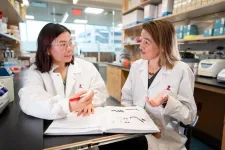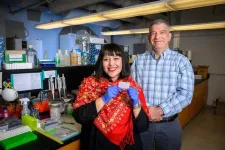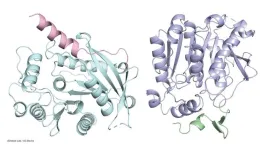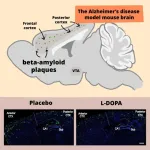(Memphis, Tenn. – August 6, 2024) To effectively treat a disease or disorder, doctors must first know the root cause. Such is the case for developmental and epileptic encephalopathies (DEEs), whose root causes can be hugely complex and heterogeneous. Scientists at St. Jude Children’s Research Hospital demonstrated the value of DNA methylation patterns for identifying the root cause of DEEs, showing specific gene methylation and genome-wide methylation “episignatures” can help identify the genes that cause DEE. The findings were published today in Nature Communications.
DEEs affect 1 in 590 children and involve more than 825 genes. Current testing methods can clinically identify the root cause, or etiology, of approximately 50% of individuals’ DEEs, which guides clinicians and families to appropriate care and support. However, the remaining half of all patients remain unsolved.
“About half of the patients with DEE will get a diagnosis, and half of them won’t,” said co-corresponding author Heather Mefford, MD, PhD, St. Jude Center for Pediatric Neurological Disease Research and Department of Cell & Molecular Biology.
When a child is diagnosed with DEE, linking the encephalopathy to a specific gene can allow the clinician to provide appropriate treatment or control over the symptoms of the disorder. This knowledge is also invaluable to the family.
“The half who do not receive diagnosis not only won’t be able to get gene-specific recommendations in their therapy, they won’t be able to link with family organizations that can connect them with other families with children that also have mutations in that gene,” explained Mefford.
The value of identifying rare genetic links to DEE
Addressing the genetic root causes for DEEs has been a long-term goal for Mefford, who was instrumental in raising the number of diagnosable cases to 50%, up from approximately 5% just a decade ago.
Today, 80% of identifiable DEEs can be explained by 27 genes. To tackle the remaining unsolved cases, the numerous rare occurrences of the disorder must be identified, a challenge that co-first author and St. Jude Graduate School of Biomedical Sciences student Christy LaFlamme embraced.
“One way we can get at the remaining 50% is by exploring what traditional tests don’t look at,” said LaFlamme. “Current tests don’t look at noncoding space that regulates gene expression. A lot of these disorders are due to losing expression of epilepsy genes.”
DNA methylation fingerprint offers solution
Mefford is exploring epigenetics, the changes in gene expression that may or may not involve DNA alterations, as a potential solution. One such epigenetic change involves a process vital to gene expression called DNA methylation. This process is akin to a chef leaving notes beside a recipe instructing the reader to skip or repeat a step.
“For some genetic disorders, everyone with a mutation in the same gene has a methylation profile across their genome that puts them in a category with all the others with the same genetic disorder,” said Mefford. This methylation landscape is called an “episignature” and is akin to a DEE fingerprint.
While episignatures allowed the researchers to broadly identify DEE-causing variants, taking a closer look at the individual methylation instances, referred to as rare methylation analysis, presented another opportunity. “The underlying cause of the disease ends up manifesting into an episignature that can serve as a marker for that gene,” explained LaFlamme. “With rare methylation events, their analysis can point directly to the cause of the disease.”
New technologies aid in rare methylation detection
Exploring these rare methylation events across the genome using long-read DNA sequencing pointed the researchers toward DNA regions that are not commonly assessed, offering an answer to the cause of these cases.
This one-two punch allowed the researchers to identify the causative and candidate etiologies of DEEs in 2% of previously unidentified cases. This represents another significant step in identifying rare instances of DEEs and another tool to aid in diagnosing children with DEE.
Mefford is determined to continue chipping away in earnest. Her placement within the St. Jude Pediatric Translational Neuroscience Initiative means the so-called “N of few,” the rarer occurrences of neurological disorders like DEE, can continue to be tackled.
“We are still dedicated to trying to solve the remaining cases. We’ve always leveraged new technologies, such as next-generation sequencing 10 years ago and now methylation analysis and long-read sequencing,” said Mefford. “We’re always looking for technologies that will give us new information to try and solve those cases.”
Authors and funding
The study’s other first author is Cassandra Rastin of Western University. The study’s other co-corresponding author is Bekim Sadikovic of Western University. Other authors include Soham Sengupta, Emily Bonkowski, Edith Almanza Fuerte, Emily Walker, Daniel Darnell, Scott Olsen, Pandurang Kolekar, Nahdir Djekidel, Wojciech Rosikiewicz, Geoffrey Neale, and Zhaoming Wang of St. Jude; Helen Pennington of St. Jude and Rhodes College; Sophie Russ-Hall, Amy Schneider, Talia Allan, Samuel Berkovic and Ingrid Scheffer of the University of Melbourne; Miranda Galey, Joy Goffena, Sophia Gibson, Malavika Hebbar, and Danny Miller of the University of Washington and Seattle Children’s Hospital; Denis Nyaga, Nico Lieffering, and Lynette Sadleir of the University of Otago; Haley McConkey, Jennifer Kerkhof, Michael A. Levy, and Raissa Relator, of the London Health Science Centre; Dorit Lev and Tally Lerman-Sagie of the Wolfson Medical Center; Kristen Park of the University of Colorado School of Medicine; Marielle Alders of the University of Amsterdam; Gerarda Cappuccio of the Telethon Institute of Genetics and Medicine and Federico II University of Naples; Nicolas Chatron, Gaetan Lesca, and Damien Sanlaville of the University Hospital of Lyon and Claude Bernard Lyon I University; Leigh Demain of the Manchester Centre for Genomic Medicine; David Genevieve of Montpellier University; Tony Roscioli of Neuroscience Research Australia, University of New South Wales, Prince of Wales Hospital, and Sydney Children’s Hospital; Matthew Tedder of Greenwood Genetic Center; Sachin Gupta of The Children’s Hospital at Westmead; Monika Weisz Hubshman, Shamika Ketkar, Hongzheng Dai, Kim Carlyle Worley, and Jill Rosenfeld, of Baylor College of Medicine; Hsiao-Tuan Chao of Baylor College of Medicine, Texas Children’s Hospital, and the McNair Medical Institute; and Gemma Carvill of Northwestern University Feinberg School of Medicine.
The study was supported by grants from Citizens United for Research in Epilepsy (CURE) (#631106), the National Institutes of Health (DP5OD033357, U01HG007709, and U01HG007942), the National Human Genome Research Institute (U01 HG011744, UM1 HG006493 and U24 HG011746), the Australian National Health and Medical Research Council (GNT2006841, GNT2010562 and GNT1172897), the American FTrnspilepsy Society, the Health Research Council of New Zealand, Cure Kids New Zealand, the Estate of Ernest Hyam Davis, the Tedd and Mollie Carr Endowment Trust, and the GRIN2B foundation.
St. Jude Media Relations Contacts
Chelsea Bryant
Desk: (901) 595-0564
Cell: (256) 244-2048
chelsea.bryant@stjude.org
media@stjude.org
Rae Lyn Hartley
Desk: (901) 595-4419
Cell: (901) 686-2597
raelyn.hartley@stjude.org
media@stjude.org
St. Jude Children’s Research Hospital
St. Jude Children’s Research Hospital is leading the way the world understands, treats and cures childhood cancer, sickle cell disease and other life-threatening disorders. It is the only National Cancer Institute–designated Comprehensive Cancer Center devoted solely to children. Treatments developed at St. Jude have helped push the overall childhood cancer survival rate from 20% to 80% since the hospital opened more than 60 years ago. St. Jude shares the breakthroughs it makes to help doctors and researchers at local hospitals and cancer centers around the world improve the quality of treatment and care for even more children. To learn more, visit stjude.org, read Progress: A Digital Magazine and follow St. Jude on social media at @stjuderesearch.
END





